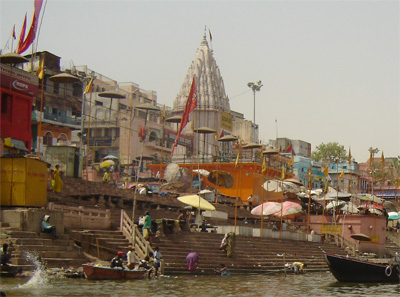Kasi and Rameswaram are both considered holy places for Hindus in India, with Kasi located in the northern part of the country and Rameswaram in the south. Both are home to Jyotirlingam shrines, with Kasi’s Vishwanatha temple and Rameswaram’s Sri Ramanathaswamy temple being particularly significant. While both places are important pilgrimage sites for Hindus, they hold different meanings: Rameswaram is associated with prosperity in this life, while Kasi is believed to offer liberation from the real world and a path to Lord Siva after death.
Key Takeaways
- Kasi and Rameswaram are both holy places for Hindus, with Kasi in the north and Rameswaram in the south of India.
- Both locations have significant Jyotirlingam shrines: Kasi’s Vishwanatha temple and Rameswaram’s Sri Ramanathaswamy temple.
- Hindus believe that pilgrimage to Rameswaram brings prosperity in this life, while pilgrimage to Kasi offers liberation and a path to Lord Siva after death.
Kasi, also known as Varanasi or Benaras, is situated on the banks of the river Ganges, which gives it a special sanctity. It is found in the Indian state of Uttar Pradesh. Rameswaram, on the other hand, is located in the Indian state of Tamil Nadu, on Pamban Island, and is about 50 kilometers from Mannar Island in Sri Lanka. Similar to Kasi’s connection with the river Ganges, Rameswaram has Agni theertham as its sacred body of water.
According to Hindu mythology, Rameswaram is the place from where Lord Rama built a bridge with the help of monkeys to rescue his wife Sita, who had been abducted by the king of Lanka, Ravana. Kasi is considered the holiest place in the world by Hindus, who are expected to make a pilgrimage there at least once in their life. The city is home to the Viswanatha Temple, where the presiding deity is Lord Siva in the Jyotirlinga form. For Hindus, a pilgrimage to Kasi is considered incomplete without also visiting Rameswaram.
Kasi is also considered holy by Buddhists and Jains, with Gautama Buddha giving his first sermon at Sarnath, near Varanasi. The city is famous for its ghats, or steps leading down to the Ganges, many of which are associated with Hindu legends and mythologies. Some ghats are used for taking holy dips in the river and performing religious rituals, while others serve as cremation sites. Hindus believe that a holy dip in the Ganges at Kasi will rid them of all their sins, and that death in the city ensures they will not be reborn. Those who cannot visit Kasi take a holy dip in Agni theertham and offer oblations to their ancestors at Rameswaram.
Rameswaram has 36 water springs, with 22 located in the Ramanathaswamy temple. These waters are believed to have medicinal properties, and bathing in them is considered highly significant. The Agni theertham of the temple refers to the ocean, while the Koti theertham is within the temple itself.
Hindus believe that one should go on pilgrimage to Kasi in a group, but visit Rameswaram alone. Kasi is also home to music traditions, with the Benaras Gharana of the Hindustani Music style developing in the city. Several poets and musicians have made their home in Kasi, and the city is also famous for its Banaras saris and carpets. In Rameswaram, notable sites include the thousand pillar corridor in the Sri Ramanathaswamy temple, the foot of Rama, Naga Idols at Ram temple, and Sita Kund.
